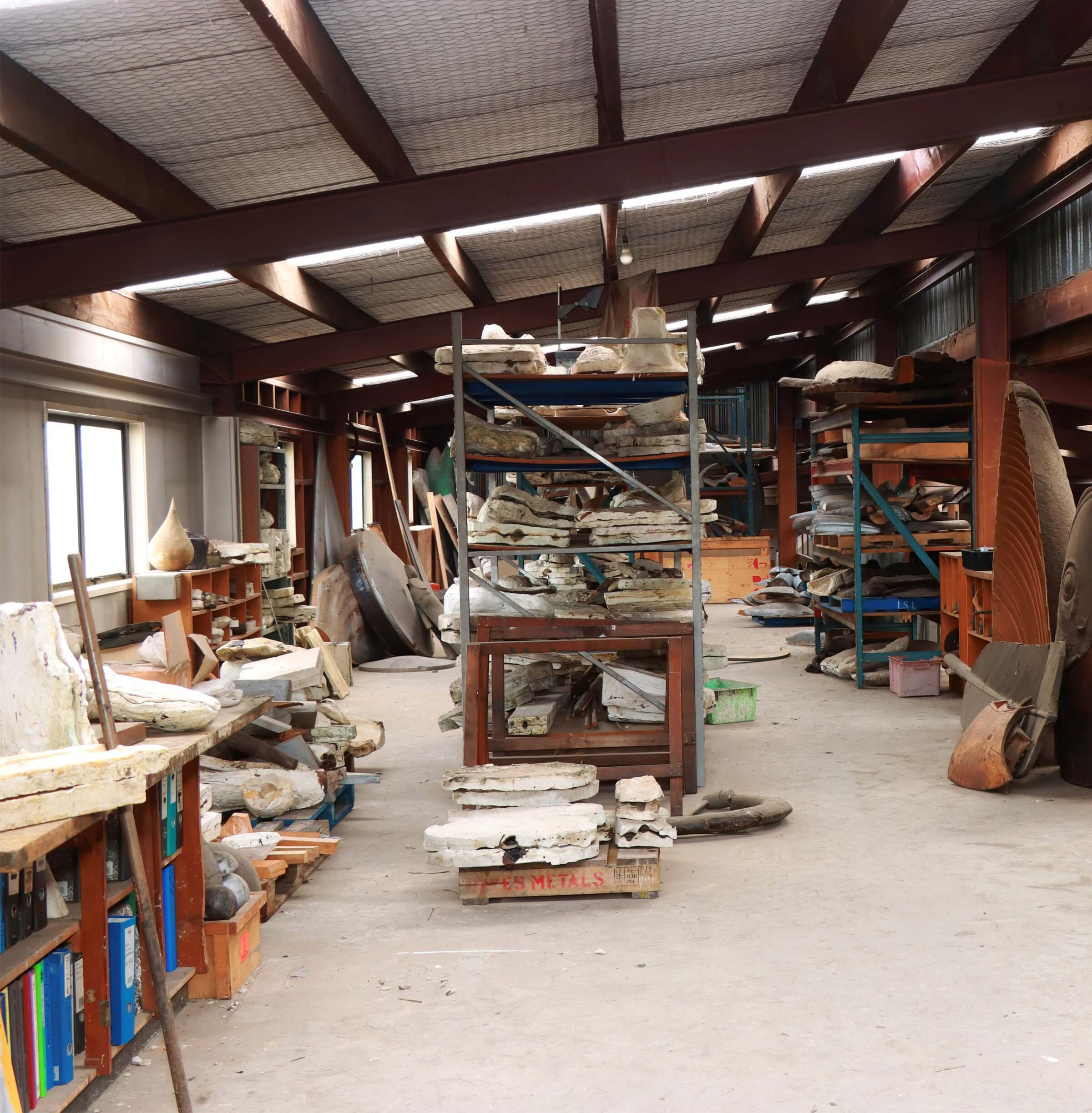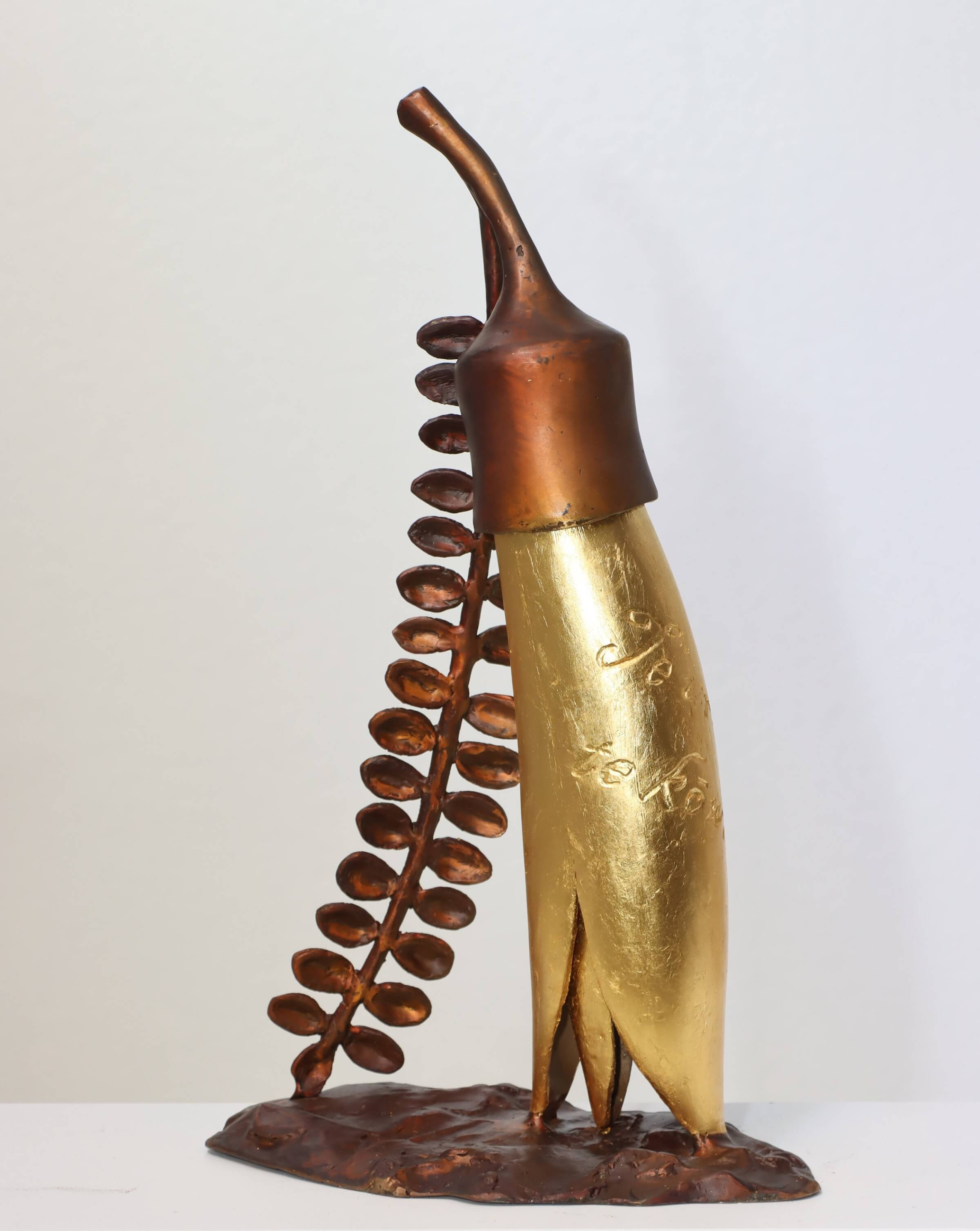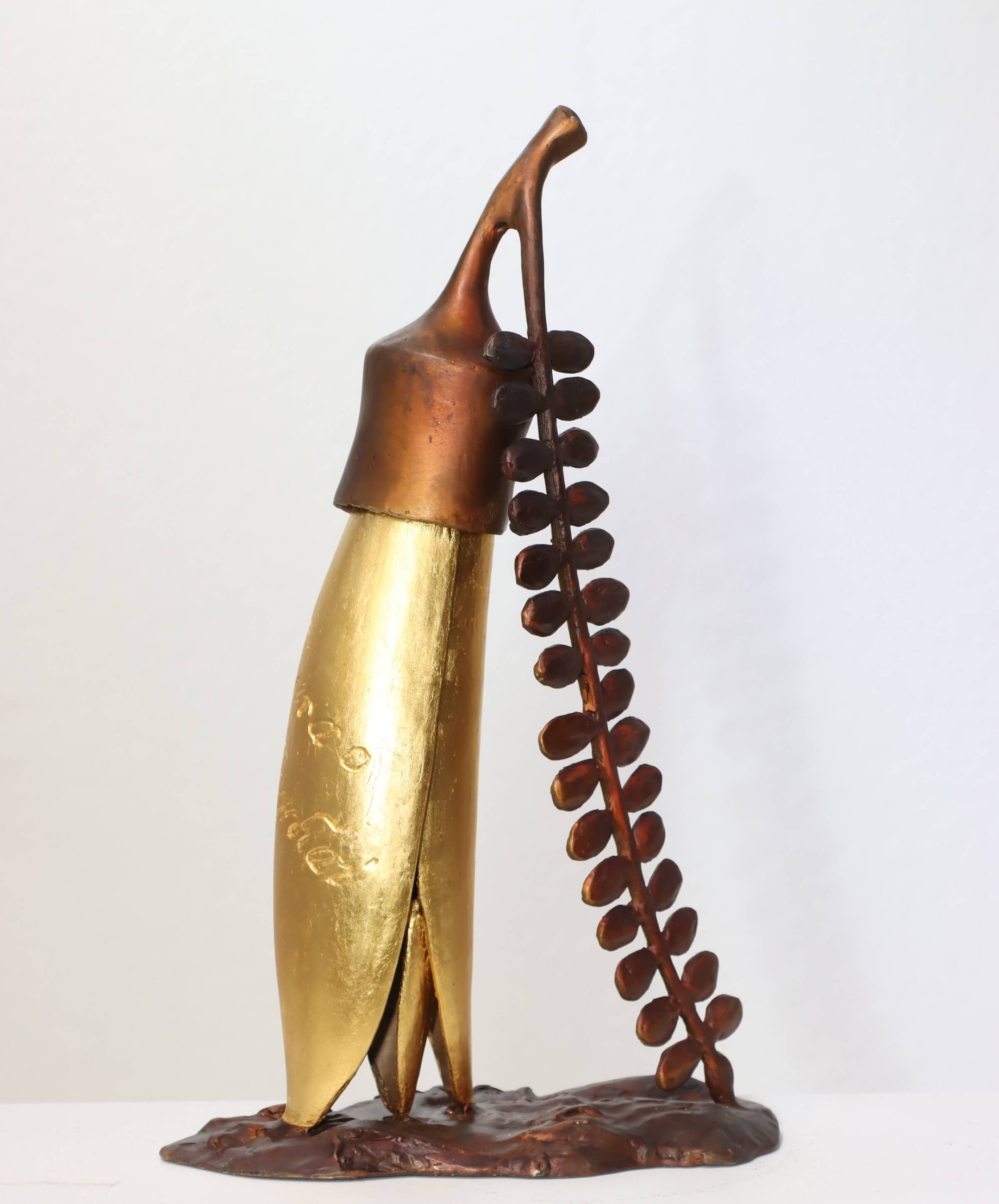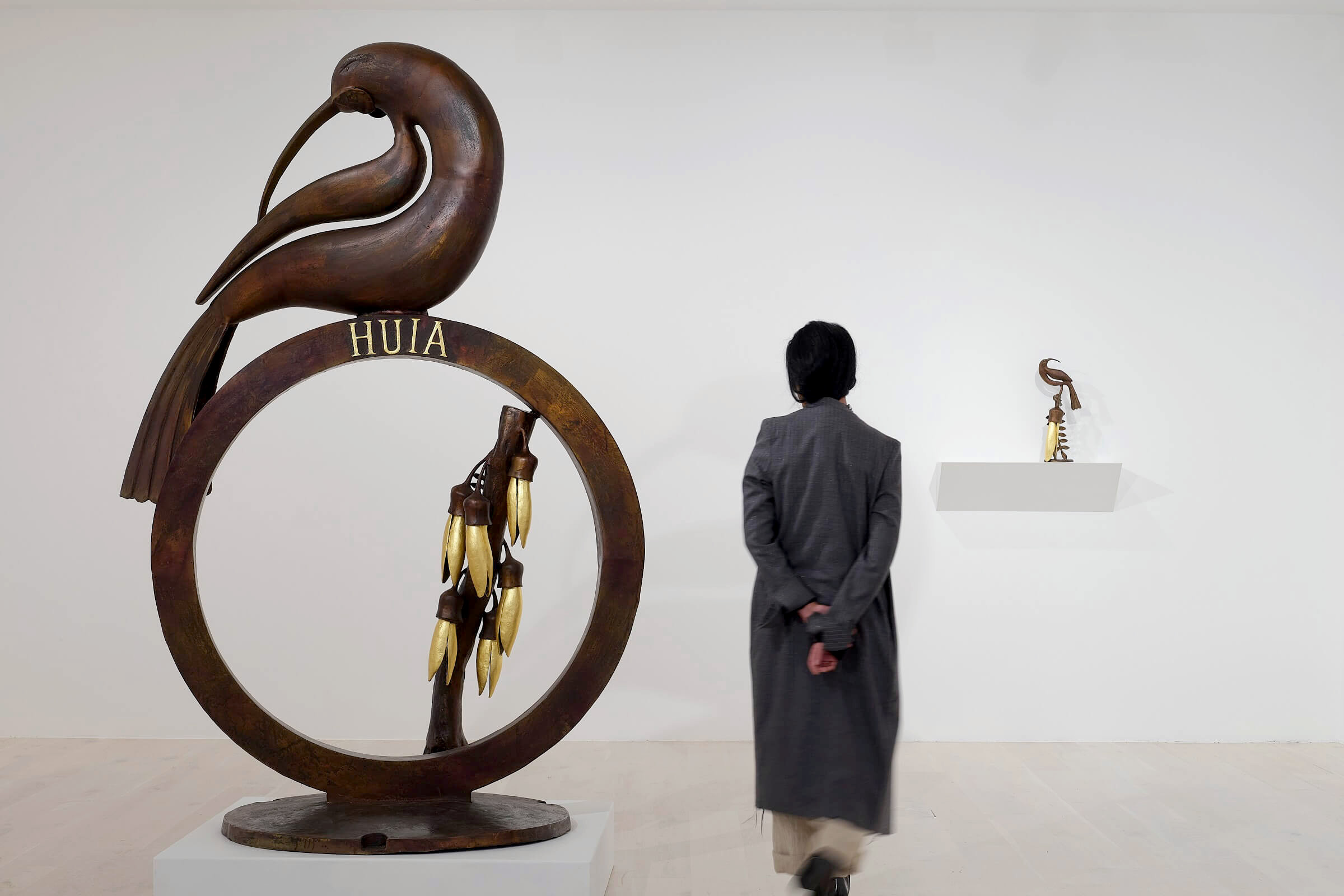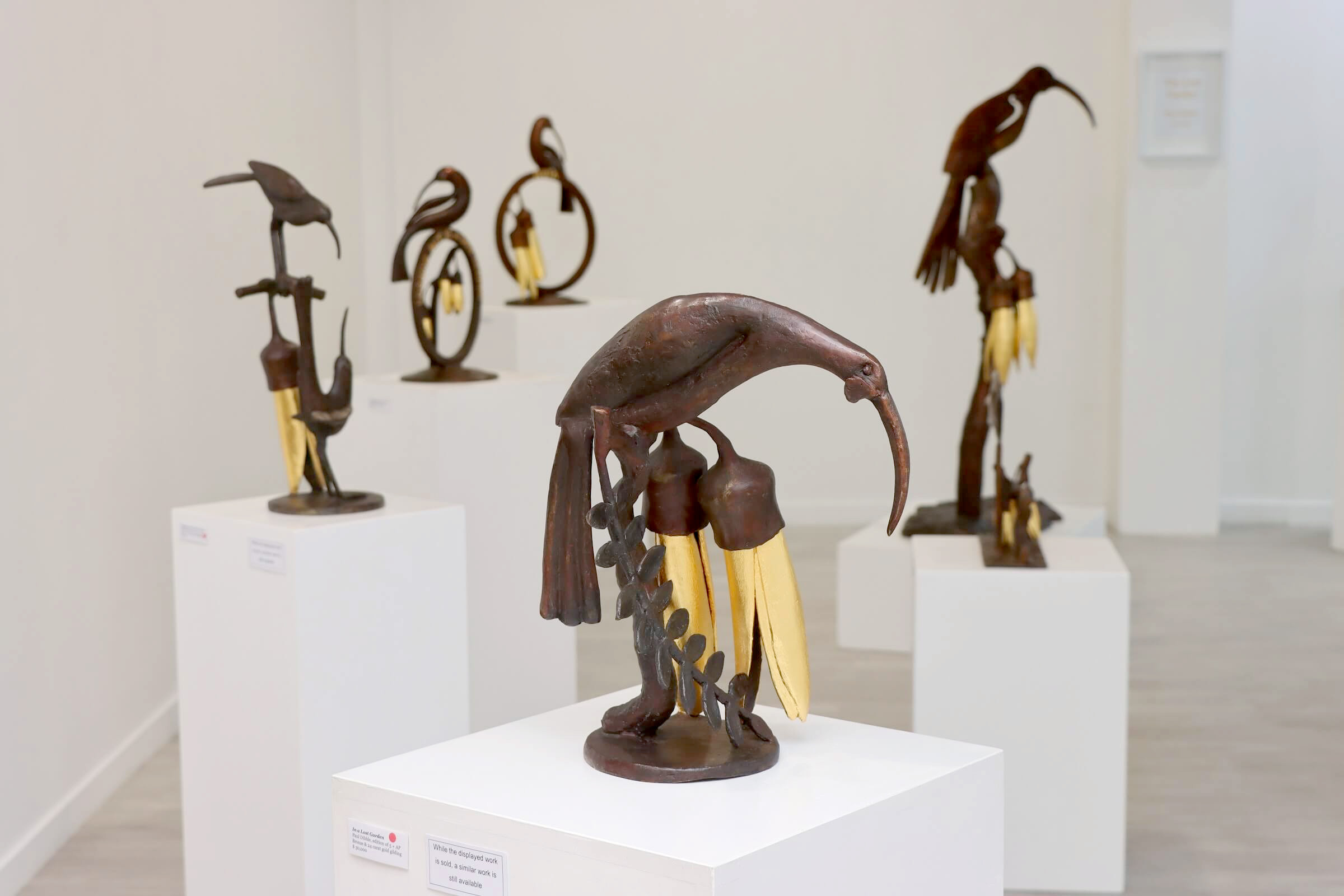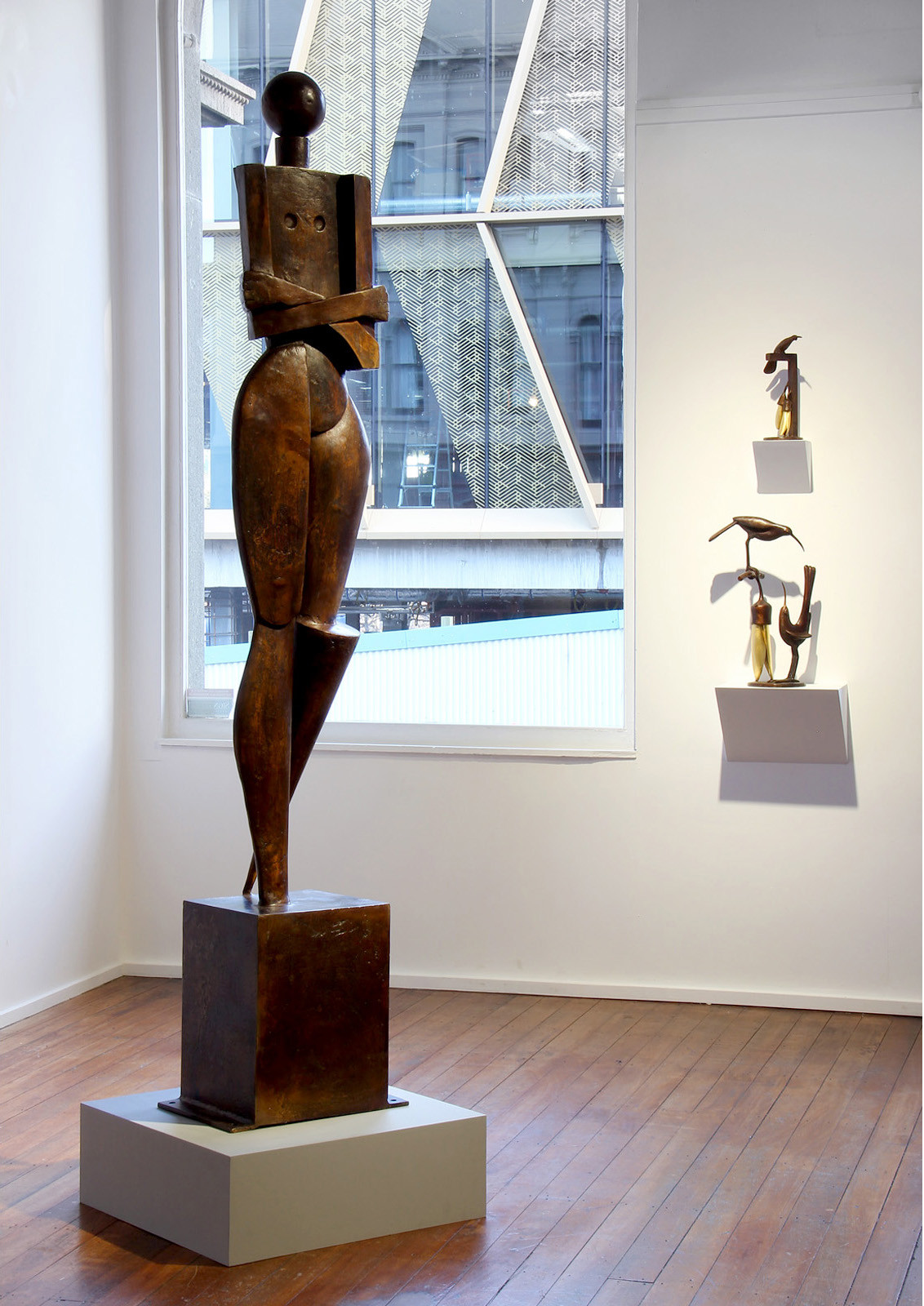2023 The Glow of the Kōwhai
2023 The Glow of the KōwhaiBronze, Gold 24 carat
520 x 320 x 190 mm
2023
Edition of 10 + AP
Te ura o te kōwhai (on one petal, translates as "the glow of the kōwhai")
Notes
Te ura o te Kōwhai, the title and the phrase inscribed on the petal of the flower were inspired by two sources. The first is a Herculean style Māori myth thought to have originated from the Rotorua Lakes region, used to explain the plant’s flowering on bare and leafless branches.
This was recalled by James Cowan, described in the following insert:
On the shore of one of these lakes, said the arboreal fairy tale, there sat one day in the misty long ago a young Māori man and girl. The man pressed his love on the beautiful Kotiro; he sought her for his wife, but the maid laughed—Māori maids are as “kittle cattle” as their Pakeha sisters—and said she'd see; she would wait; she would not accept his love until her suitor—who was an Ariki of high rank and a tohunga too—performed some great and unexampled deed before she would become his wife. She would wed none but a famous man, a man whose exploits no one could outdo.
The lover accepted the challenge. “You shall see what I can do,” he said, He turned to the tree under which they were sitting. It was a Kowhai. The time was about our Pakeha month of August. The tree was quite bare of both flower and leaf.
“I shall,” said the young tohunga, “cause this tree to spring into flower before your eyes.” With those words he put forth all his occult powers, the command of mind over matter, which had been taught him by the wise men in the sacred house of instruction. He recited in quick tense tones his magic prayers. And, all in a moment, a miracle! All at once the tree burst forth into a blaze of blossom. All its naked boughs were covered in a breath with golden hanging flowers.
The amazed girl saw, and was conquered. No man surely could rival that wonder-feat of her priestly lover.
And ever since that day, says the Māori, the Kowhai has flowered on leafless branches, a sign and a reminder of the ancient miracle.
The second source and where the phrase comes from is a legend from the Waikato where the clusters of flowers on the trees reflected in a river or lake give such beauty (titling it the “Kōwhai-turanga ora,” or “Tree of Life”) that it was perceived as a representation of power.
